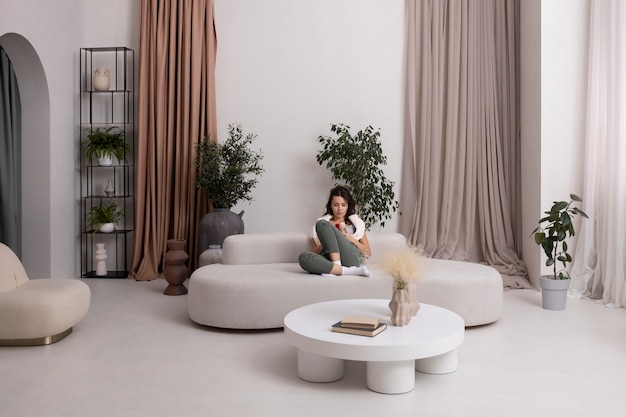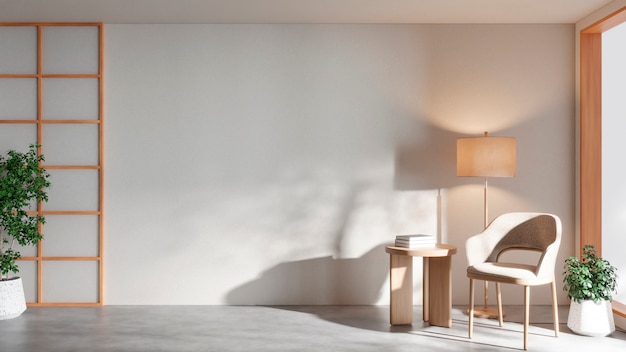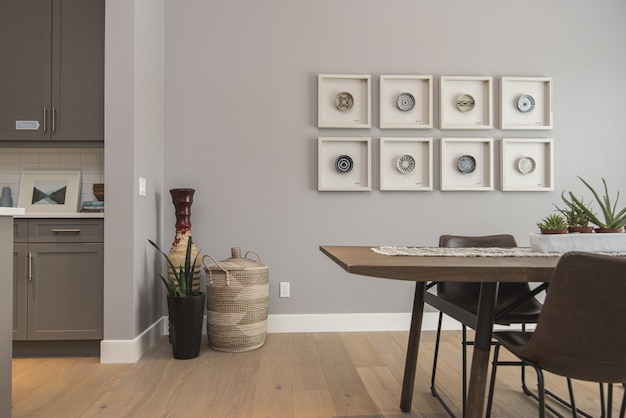When I first decided to adopt a minimalist approach to my home’s interior, I didn’t know where to start. It wasn’t just about getting rid of clutter but creating a space that felt calm, inviting, and balanced. I wanted my living space to reflect my personality while staying true to the minimalist aesthetic. Through some trial and error, I discovered a few key strategies that made the transition easier and more enjoyable. I’m excited to share them with you in this guide.
What is Minimalist Interior Design?

At its core, minimalist interior design is about stripping away excess to highlight what truly matters. Think clean lines, functional furnishings, and a soothing colour palette. But minimalism isn’t about making your home look sterile or boring. It’s about making deliberate choices so that every piece in your home serves a functional or aesthetic purpose.
I found that my space felt more harmonious once I embraced this mindset. With fewer distractions, I could actually relax and appreciate my surroundings. I realised that every room could tell a story through simplicity.
Getting Started with Minimalist Interior Design
One of the biggest concerns people have is that they’ll have to get rid of everything. That’s not the case! Minimalism is personal, and you can start small. For example, I began by tackling one area at a time. I started with my living room, choosing a neutral base and adding in only a few cherished items. From there, I worked room by room, adjusting as I went. It made the process far less overwhelming.
Step 1: Choose a Neutral Palette
When I began, I didn’t realise how much colour could influence the mood of a room. Neutral tones—think whites, greys, beiges—became my foundation. These hues made my space feel larger, calmer, and more cohesive.
If that feels too cold, you don’t have to stick to stark white walls. Instead, try warm off-whites, soft greys, or muted pastels. You can even introduce some natural wood tones to add warmth and texture. Once I settled on a consistent palette, decorating became so much easier. It’s amazing how a unified colour scheme can tie everything together.
Step 2: Focus on Function
One of my favourite pieces of advice is to think about function first. What do you need in each room? That meant swapping out bulky coffee tables for a simple, lightweight design that made my living area feel open. In my bedroom, I chose a bed frame with built-in drawers. It served two purposes: a clean, modern aesthetic and much-needed storage.
Every item in your home should earn its place. Does it serve a purpose? Does it bring you joy? If not, it’s okay to let it go. It’s incredibly freeing once you focus on what you truly need rather than holding on to items out of habit.
Step 3: Embrace Negative Space
Negative space—those empty areas around furniture and decor—was a game-changer for me. At first, I needed to fill every corner with something. However, leaving some spaces open made my rooms feel more balanced and peaceful.
I found that a room with breathing room lets the pieces you do have shine. For instance, a simple plant in an otherwise empty corner becomes a beautiful focal point. A single artwork on the wall stands out more than a cluttered gallery. Negative space isn’t wasted space; it’s intentional, and it’s what gives minimalist interiors their signature tranquillity.
Step 4: Add Natural Elements
Nature plays a huge role in minimalist interior design. I love adding organic textures like wood, stone, and woven fabrics. A few carefully placed plants—like a fiddle leaf fig or a snake plant—added life and a sense of freshness to my home. Plus, natural materials never go out of style. They ground the space and make it feel warm and inviting, even when the design is pared back.
Step 5: Quality Over Quantity
In my early days of simplifying my home, I’d buy cheap, trendy items that didn’t last. I soon learned that investing in a few high-quality pieces was worth it. Instead of having a collection of cheap decor, I chose a solid, well-made sofa, a timeless dining table, and durable kitchenware. They not only looked better, but they lasted longer, which saved me money in the long run.
Minimalism is about surrounding yourself with things you love and that serve you well. A few quality items go further than a room full of mediocrity. Plus, fewer, better pieces are easier to maintain, leaving more time to enjoy your space.
Step 6: Experiment and Adapt
When I first started embracing minimalist interior design, I thought I had to follow strict rules. But what I learned is that it’s okay to experiment. I tried different layouts, mixed textures, and played with lighting until I found what felt right.
Don’t be afraid to switch things up. Maybe one month, you will try a new chair in the reading corner or swap out a throw rug for something simpler. The beauty of minimalism is that it’s flexible. Over time, you’ll find the balance that suits your lifestyle and tastes.
Why Minimalist Interior Design Matters
Beyond the aesthetic appeal, minimalist interiors positively impact mental clarity and overall well-being. When my home felt cluttered, my mind felt cluttered, too. Once I embraced minimalism, I noticed I was less stressed and more focused. Cleaning and maintaining my home also became quicker and easier, giving me more time to do what I love.
In today’s fast-paced world, having a calm, organised space can make a huge difference. It’s a way to slow down, appreciate what you have, and create a home that truly supports you.
Final Thoughts on Minimalist Interior Design

Minimalist interior design isn’t about following a rigid formula. It’s about curating a home that reflects who you are, supports your lifestyle, and gives you peace. By starting small, focusing on function, and embracing simplicity, you can create a space that feels both beautiful and meaningful.
If you’re inspired, why not start with just one corner of your home? You’ll be amazed at how even a few simple changes can transform your entire space. Trust me, it’s worth it.


